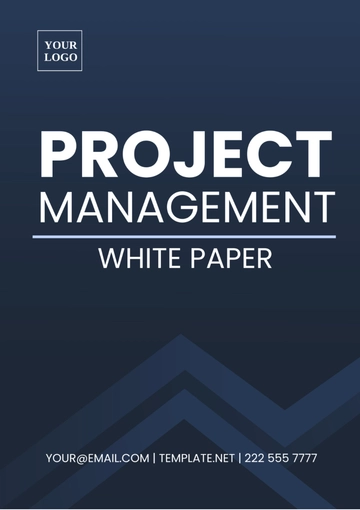Free Digital Hiring Strategy White Paper

White Paper
[Your Company Name] presents this strategic exploration authored by [Your Name]. This document consolidates expert insights and actionable strategies tailored to enhance our hiring process through technological advancements.
I. Executive Summary
This white paper provides a comprehensive analysis of current digital hiring trends, challenges, and solutions specific to [Your Industry]. By adopting the outlined strategies, [Your Company Name] can position itself as a leader in innovative recruitment, ensuring access to top talent and improving hiring ROI.
II. Introduction

The landscape of recruitment has significantly been reshaped by technology, from how we attract candidates to how we assess and onboard them. This document aims to guide [Your Company Name] through the necessary transitions and enhancements in its hiring processes.
III. The Need for Digital Hiring Strategy

As competition for top talent intensifies, the need for a robust digital strategy becomes more paramount. This section outlines key benefits such as:
Increased reach to global talent pools
Enhanced efficiency in screening and selection processes
Improved candidate experience and engagement
Cost reductions in long-term recruitment expenditures
IV. Core Components of an Effective Digital Hiring Strategy
Building a successful digital hiring strategy involves multiple components, each contributing to a seamless, efficient, and effective recruitment process. These components include:
Digital Attraction and Sourcing: Methods and platforms for attracting digital-savvy candidates.
Applicant Tracking Systems (ATS): Utilization of ATS for improved candidate management and tracking.
Online Assessment Tools: Tools for assessing the skills and potential of candidates efficiently.
Video Interviewing: Implementing video interviews to speed up the interview process without compromising the quality of hire.
Data Analytics: Leveraging data to drive hiring decisions and predict hiring needs.
V. Challenges in Implementing a Digital Hiring Strategy
Adopting a new hiring approach comes with its set of challenges which [Your Company Name] needs to anticipate and manage effectively:
Integration with existing HR systems and processes
Ensuring data privacy and security compliance
Resistance to change from traditional recruiting teams
Training requirements for new technologies and methods
VI. Recommendations
Based on research and expert opinions, the following recommendations are proposed for [Your Company Name] to successfully navigate the transition to a digital hiring model:
Gradually integrate new technologies to complement existing processes.
Invest in training and development for HR personnel.
Focus on candidate experience to enhance brand reputation.
Use data analytics to continually refine and optimize hiring processes.
VII. Conclusion
The adoption of a digital hiring strategy is not merely a trend but a necessary evolution to stay competitive in [Your Industry]. By embracing the strategies outlined in this white paper, [Your Company Name] can achieve significant improvements in recruitment outcomes and operational efficiency.
VIII. References
Smith, T. (2023). Digital Recruitment Strategies: Transforming Talent Acquisition in the Digital Age.
Johnson, K. (2022). Data-Driven Recruiting: How to Leverage Analytics to Attract and Retain Top Talent.
Patel, R. (2024). The Future of Work: Navigating Remote Recruitment and Onboarding in a Digital World.
Garcia, M. (2023). AI-Powered Recruitment: Harnessing the Potential of Artificial Intelligence for Talent Acquisition.
Williams, S. (2022). The Digital Candidate Experience: Optimizing Recruitment Processes for Success in the Virtual Age.
- 100% Customizable, free editor
- Access 1 Million+ Templates, photo’s & graphics
- Download or share as a template
- Click and replace photos, graphics, text, backgrounds
- Resize, crop, AI write & more
- Access advanced editor
Shape the future of recruitment with our Digital Hiring Strategy White Paper Template, a comprehensive guide tailored for talent acquisition professionals. Designed for clarity and effectiveness, it provides a roadmap to navigate the digital landscape of recruitment. Customizable and downloadable, this template, offered by Template.net, ensures your strategies are communicated with authority. Editable in our AI Editor Tool, transform your recruitment vision into actionable plans, ready to attract top talent.





























